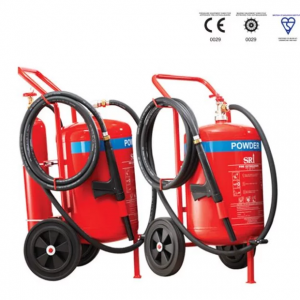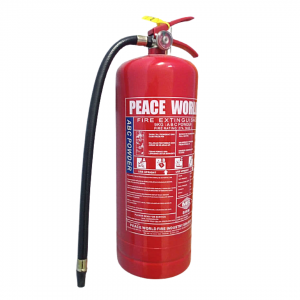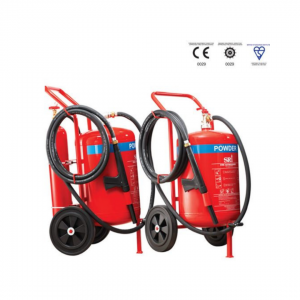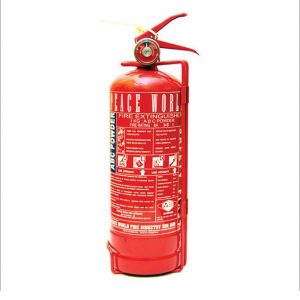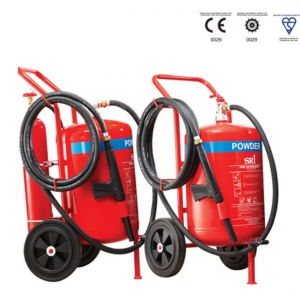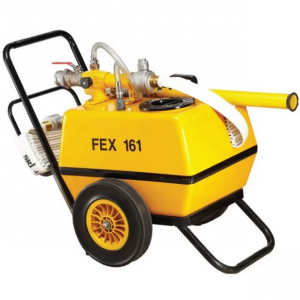Fire Monitors for Effective Fire Suppression
Fire monitor, also known as water cannons or deluge guns, are pivotal in large-scale fire suppression. These high-capacity devices can deliver substantial amounts of water or firefighting foam over considerable distances, making them indispensable in industrial, marine, and municipal firefighting. This article explores the types, mechanisms, applications, and maintenance of fire monitors, highlighting their role in enhancing fire safety.
Types of Fire Monitor
- Manual Fire Monitors: Operated by firefighters directly, these monitors require manual aiming and operation. They are typically mounted on a fixed base or on firefighting vehicles and are adjusted using handwheels or levers.
- Remote-Controlled Fire Monitors: These monitors can be operated remotely, either through a wired control panel or wirelessly. They allow firefighters to control the direction and flow of water or foam from a safe distance, enhancing safety during hazardous situations.
- Self-Oscillating Fire Monitors: Equipped with mechanisms that automatically oscillate the water or foam stream back and forth, these monitors cover a wide area without the need for manual adjustment, ideal for protecting large, open spaces.
- Portable Fire Monitors: Lightweight and easily transportable, these monitors can be quickly deployed in various locations. They are suitable for temporary setups or in scenarios where flexibility and rapid response are crucial.
Mechanisms of Action
Fire monitors operate by channeling water or foam through a nozzle at high pressure. Key components include:
- Base or Mount: Provides stability and support, allowing the monitor to be securely positioned.
- Nozzle: Designed to optimize the flow and reach of water or foam. Adjustable nozzles can alter the spray pattern from a concentrated jet to a wide spray.
- Control System: Manual, remote, or automatic systems that allow firefighters to direct the flow and adjust the pressure and pattern of the discharge.
Applications
- Industrial Facilities: Fire monitors are essential in industries with high fire risks, such as oil refineries, chemical plants, and warehouses. They provide effective suppression for flammable liquid fires and large-scale incidents.
- Marine Environments: Ships, ports, and offshore platforms use fire monitors to manage fires involving fuel and hazardous materials. Their ability to cover large areas quickly is critical in these settings.
- Municipal Fire Departments: Urban and rural fire services use monitors for various emergencies, including building fires, vehicle fires, and large-scale outdoor fires. Their high capacity and reach make them invaluable in controlling significant fires.
- Airport Firefighting: Airports use fire monitors on rescue and firefighting vehicles to deal with aircraft fires. The rapid deployment and powerful discharge capabilities are crucial for handling such high-stakes situations.
Maintenance and Inspection
Regular maintenance and inspection of fire monitors ensure their reliability and effectiveness:
- Routine Inspections: Check for wear and tear, corrosion, and obstructions in the nozzle and control mechanisms. Ensure all moving parts are functioning correctly.
- Testing and Calibration: Regularly test the monitor’s discharge capacity, pressure, and range. Calibrate control systems to ensure precise operation.
- Cleaning: Remove any debris or buildup from the nozzle and water pathways to maintain optimal flow.
- Lubrication: Apply appropriate lubricants to moving parts to prevent rust and ensure smooth operation.
Advancements in Fire Monitor Technology
Recent advancements have enhanced the functionality and efficiency of fire monitors:
- Smart Monitors: Integration with sensors and automation systems allows smart monitors to detect fires and automatically target the source, adjusting the discharge pattern and flow rate in real-time.
- Enhanced Materials: The use of corrosion-resistant and lightweight materials improves durability and ease of deployment.
- Improved Nozzle Designs: Advanced nozzle designs offer better reach and coverage, optimizing the effectiveness of water and foam application.
Fire monitor are a vital component of modern firefighting, providing powerful, high-capacity suppression capabilities for a wide range of fire scenarios. Their versatility, from industrial and marine applications to municipal and airport firefighting, underscores their importance in maintaining fire safety. Regular maintenance, coupled with technological advancements, ensures that fire monitors remain reliable and effective tools in combating large-scale fires. By understanding their types, mechanisms, and applications, we can better appreciate the critical role fire monitor play in protecting lives and property.





